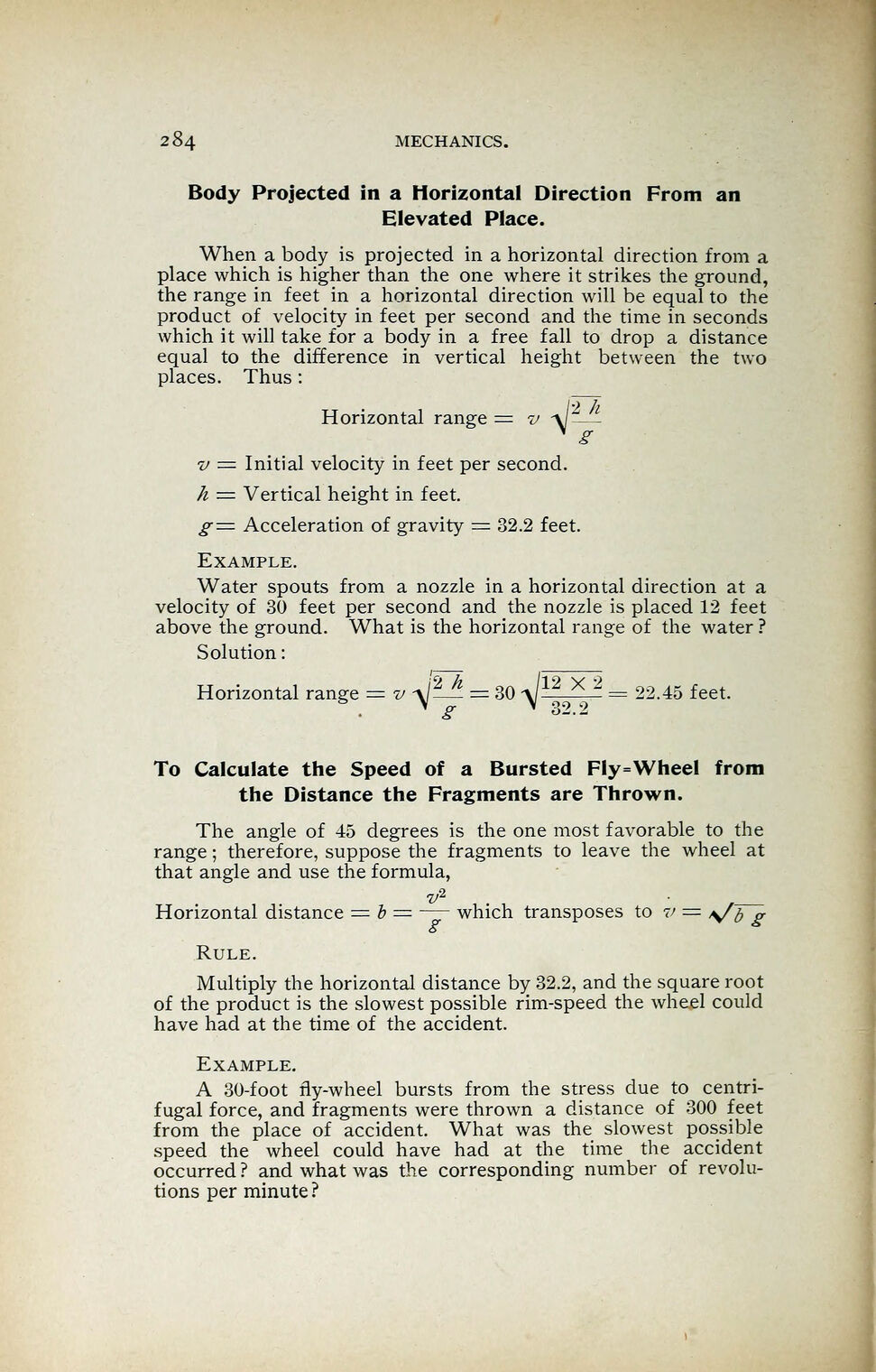
Full resolution (JPEG) - On this page / på denna sida - Mechanics - Body projected in a horizontal direction from an elevated place - To calculate the speed of a bursted fly-wheel from the distance the fragments are thrown

<< prev. page << föreg. sida << >> nästa sida >> next page >>
Below is the raw OCR text
from the above scanned image.
Do you see an error? Proofread the page now!
Här nedan syns maskintolkade texten från faksimilbilden ovan.
Ser du något fel? Korrekturläs sidan nu!
This page has never been proofread. / Denna sida har aldrig korrekturlästs.
284 MECHANICS.
Body Projected in a Horizontal Direction From an
Elevated Place.
When a body is projected in a horizontal direction from a
place which is higher than the one where it strikes the ground,
the range in feet in a horizontal direction will be equal to the
product of velocity in feet per second and the time in seconds
which it will take for a body in a free fall to drop a distance
equal to the difference in vertical height between the two
places. Thus
:
Horizontal range = v A/ —
* S
v = Initial velocity in feet per second.
h = Vertical height in feet.
jr= Acceleration of gravity = 32.2 feet.
Example.
Water spouts from a nozzle in a horizontal direction at a
velocity of 30 feet per second and the nozzle is placed 12 feet
above the ground. What is the horizontal range of the water ?
Solution
:
Horizontal range = v -\j— = 30
\J-
X ,
2
= 22.45 feet.
To Calculate the Speed of a Bursted Fly=Wheel from
the Distance the Fragments are Thrown.
The angle of 45 degrees is the one most favorable to the
range ; therefore, suppose the fragments to leave the wheel at
that angle and use the formula,
v2
,
Horizontal distance = b = —— which transposes to v = a^/ fr
g
Rule.
Multiply the horizontal distance by 32.2, and the square root
of the product is the slowest possible rim-speed the wheel could
have had at the time of the accident.
Example.
A 30-foot fly-wheel bursts from the stress due to centri-
fugal force, and fragments were thrown a distance of 300 feet
from the place of accident. What was the slowest possible
speed the wheel could have had at the time the accident
occurred ? and what was the corresponding number of revolu-
tions per minute?
<< prev. page << föreg. sida << >> nästa sida >> next page >>